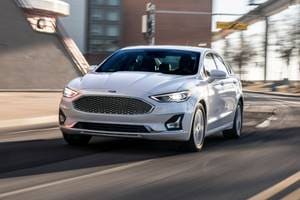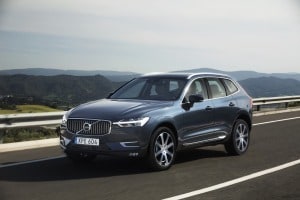Will New GM Trucks Be Greater, More Powerful Than Their Competitors?

General Motors unveiled its highly-anticipated next-generation pickup trucks this week in cinematic style. Using as its backdrop a now-abandoned movie studio in Pontiac, Mich., once the epicenter of GM's truck development and production, GM revealed the 2014 Chevrolet Silverado by exploding a boulder from which the Chevy appeared and 2014 GMC Sierra. by using a laser beam to cut away the container surrounding it. Most recently, the movie set was used for the upcoming Disney film "Oz: The Great and Powerful," the "Wizard of Oz" prequel about the man from Kansas who desires not to be ordinary but to be great and powerful.

Indeed, GM desires its trucks to be great and powerful, but how much more so than its prime competitors, the Ford F-150 and Ram 1500, remains to be seen since the automaker revealed little beyond the cosmetic this week. Virtually, all information involving numbers — horsepower, torque, fuel economy and price — was kept under wraps, presumably so as not to give Ford and Chrysler much advanced notice for a counter attack since the GM pickups won't be on sale until the second quarter of 2013. They will be on display for the public beginning at the Detroit auto show in January.
Here's what we do know:
Styling plays it safe by being more evolutionary than revolutionary. Refinements are aimed at optimizing aerodynamics to help boost fuel efficiency. Similarly, doors are inset into the body instead of wrapping over the hood. GM claims the Chevy and GMC versions are more differentiated than they've ever been, but, except for the specific grilles, the average person might not readily see any major differences.

GM claims the trucks' interiors are roomier, quieter and more functional than current ones and scored well with consumers in clinics. The trucks can be equipped with GM's infotainment systems — MyLink in the Chevrolet and IntelliLink in the GMC. They have 8-inch touch screens. In addition, the upgraded interiors have nooks and crannies for storage, a center console that can hang file folders and a number of USB and power outlets.
The new trucks come in three body styles (regular, extended and crew cab), in three box lengths with a V6 and two V8s backed by a six-speed automatic offered. The crew cab, a variation that came into existence only in the year 2000 and has become the style of choice with most consumers, now offers the option of a longer, 6.5-foot bed, versus the previous 5.8-foot one. The rear doors of the cab are larger with easier entry and exist as well as more legroom. The extended cab has rear doors that are now front-hinged.
The engine line-up, now denoted as EcoTec3 engines instead of the old Vortec name — consists of a 4.3-liter V6 — a much-needed, competent V6 that GM really hasn't had in the current line — as well as a 5.3-liter and 6.2-liter small-block V8. All engines maximize yet-revealed fuel economy by using a host of technologies including direct injection, continuously variable valve timing and cylinder deactivation. GM promised the three engines will generate better horsepower, torque and fuel economy than the current engines but gave no specifics. A technology GM's engine line does not have is a turbocharged version a la Ford's EcoBoost. GM faces a marketing challenge in this regard since Ford has so well established the EcoBoost as its fuel-economy leader. Edmunds.com estimates about 54 percent of F-150s sold through September came with six-cylinder engines (that compares with a mere 14 percent in 2008) while less than 8 percent of current Silverado models are generally equipped with a V6 engine.
GM hints that it focused more on truck capability than fuel economy. "The goal is to maximize performance and minimize fuel consumption," said Jeff Luke, executive chief engineer for full-size and midsize trucks.
GM executives were also quick to mention that the automaker will be launching a pair of smaller trucks after the full-size ones are on the market — ones that replace the now out-of-production Chevrolet Colorado and GMC Canyon.
The truck frames are new and use high-strength steel and a hydroformed frame to cut mass but not sacrifice strength. Lightweight but high-strength steel is also used for the cabin for lower mass. The cargo box uses rolled rather than stamped steel, also for strength, durability and light weight.

GM's first order of business before going to market with the new trucks, however, is getting rid of the current models. At the end of November, GM's pickup truck inventory increase more than 4 percent. GM executives said it would finish higher than the company's target. Edmunds.com data shows truck incentives are up 6.3 percent from a year ago, with Chrysler increasing incentives the most compared with a year ago due to a sell-down of the 2012 Ram 1500 to make way for the completely remodeled 2013 model. At the same time, GM has been lowering incentives, a direction it may have to reverse to eliminate the stock of current models.
When GM's new trucks do enter the market, the timing may prove to be perfect. They will launch a year ahead of Ford's new F-150 into a market expected to generate higher truck sales generally due to an improving economy, an uptick in the housing market and the unleashing of pent-up demand for trucks, which now average 10.4 years old for the nation's fleet. "When construction gets going, workers need trucks, and many of them have been holding off buying new ones these past few years," noted Edmunds.com Chief Economist Lacey Plache. "The housing market is showing its most dramatic signs of recovery out West and down South, so we can expect a boost in U.S. truck sales to start there. The impact will be less pronounced in the Midwest until its housing recovery shows more consistency."





